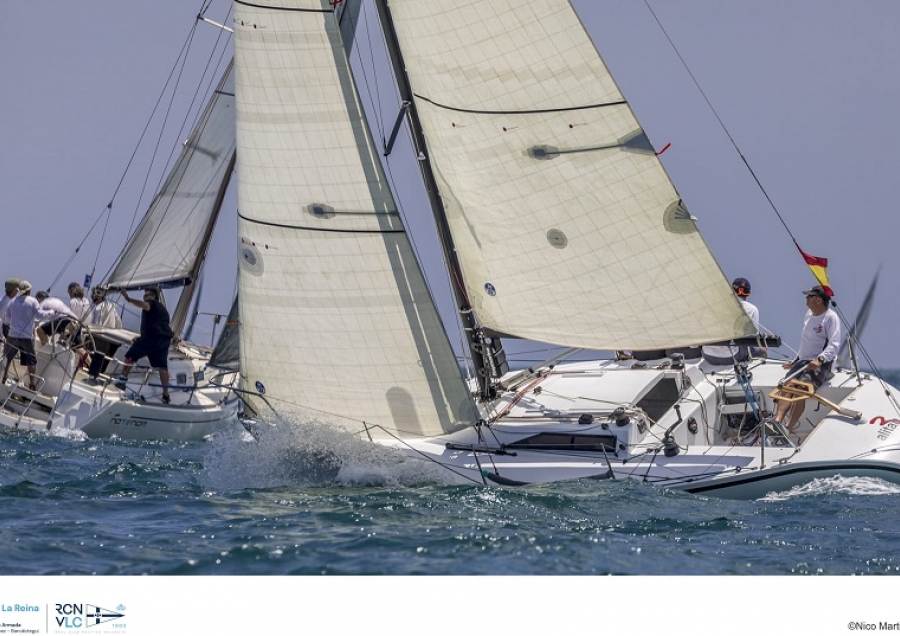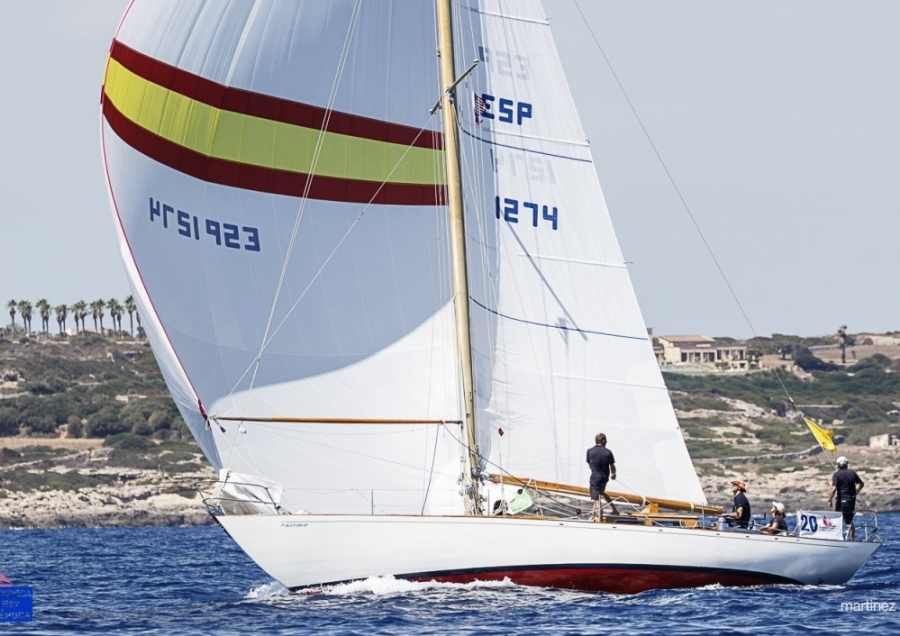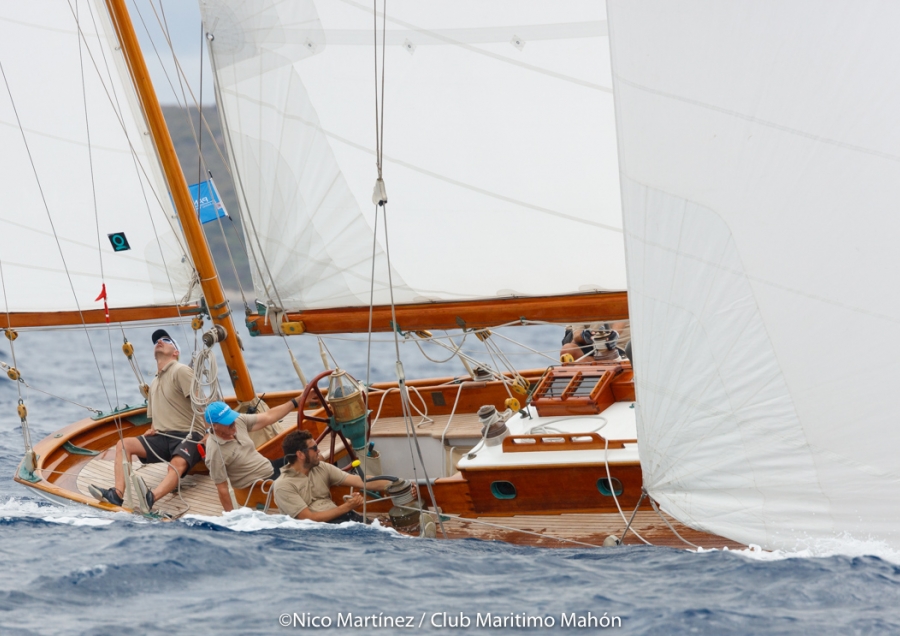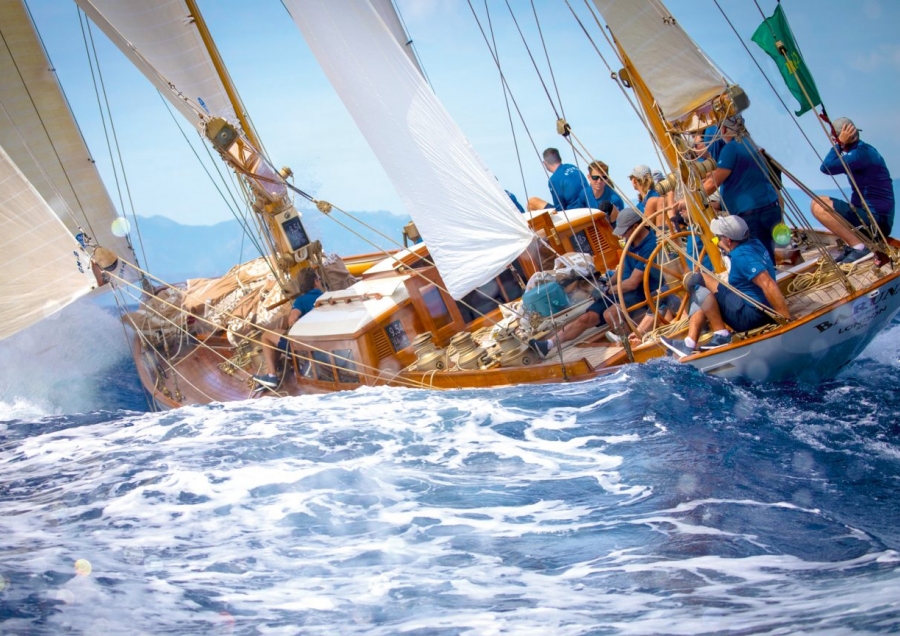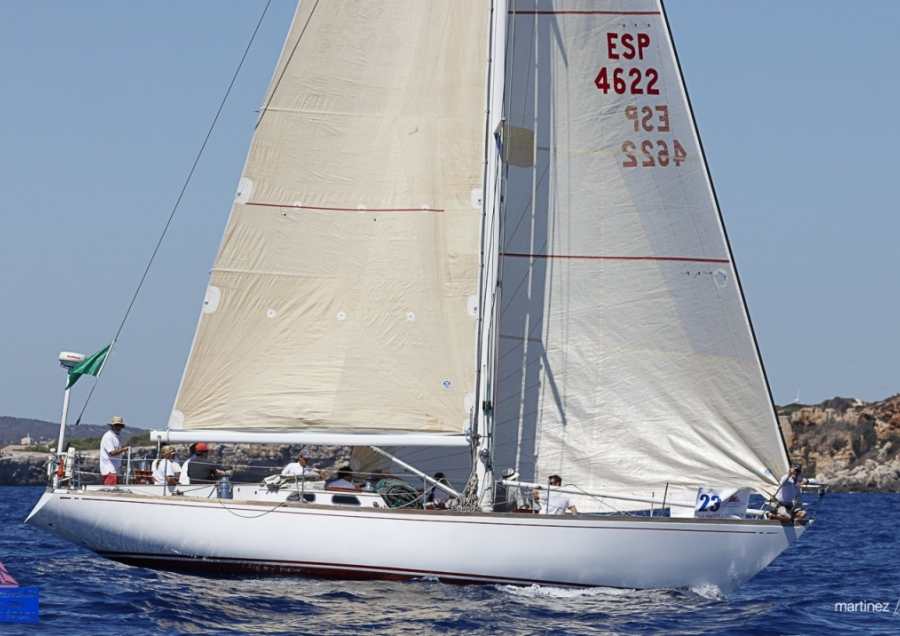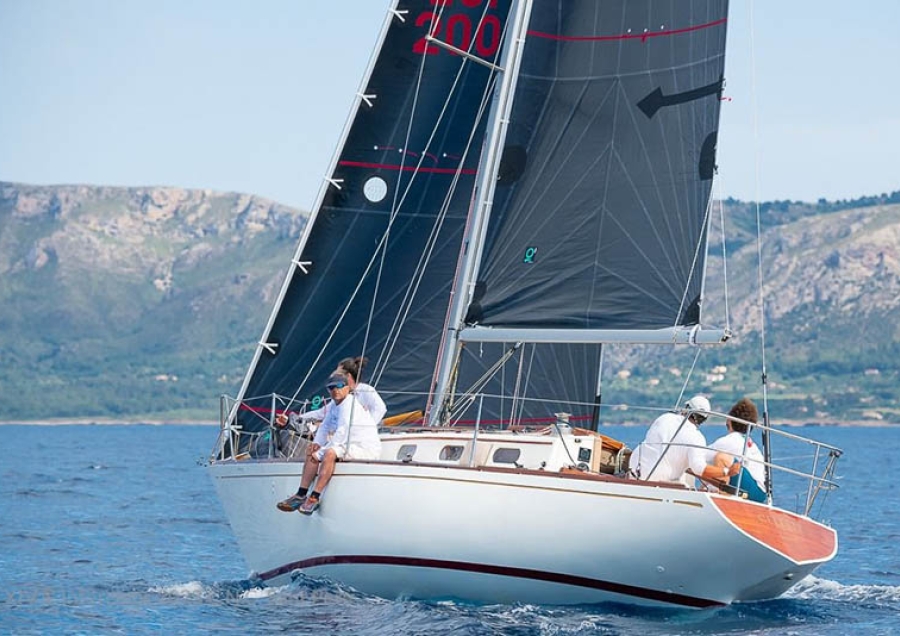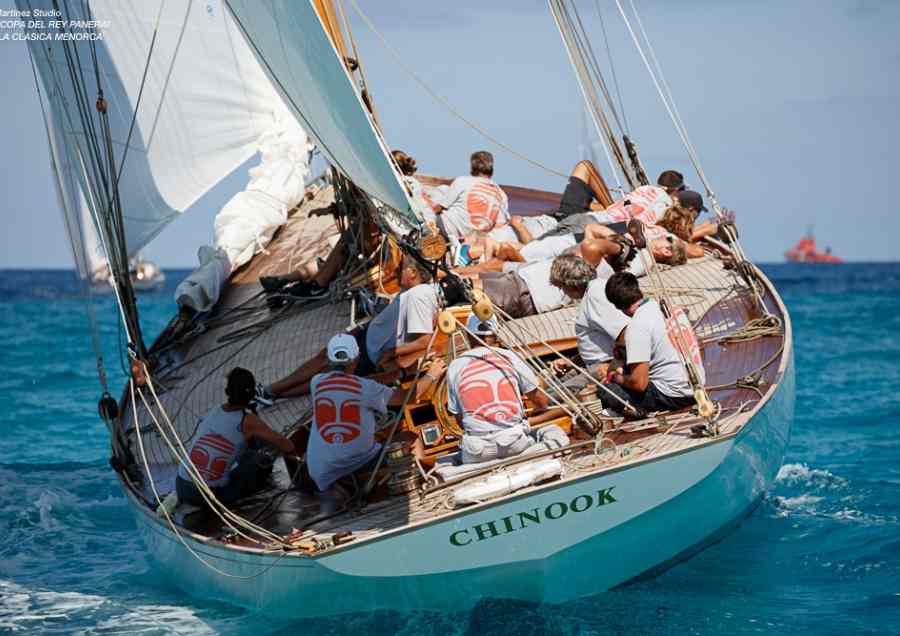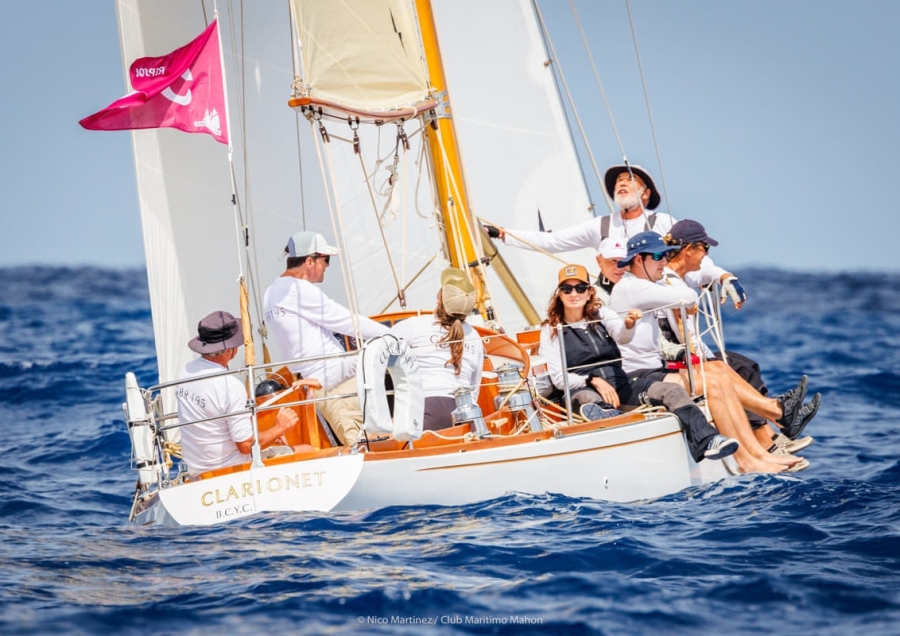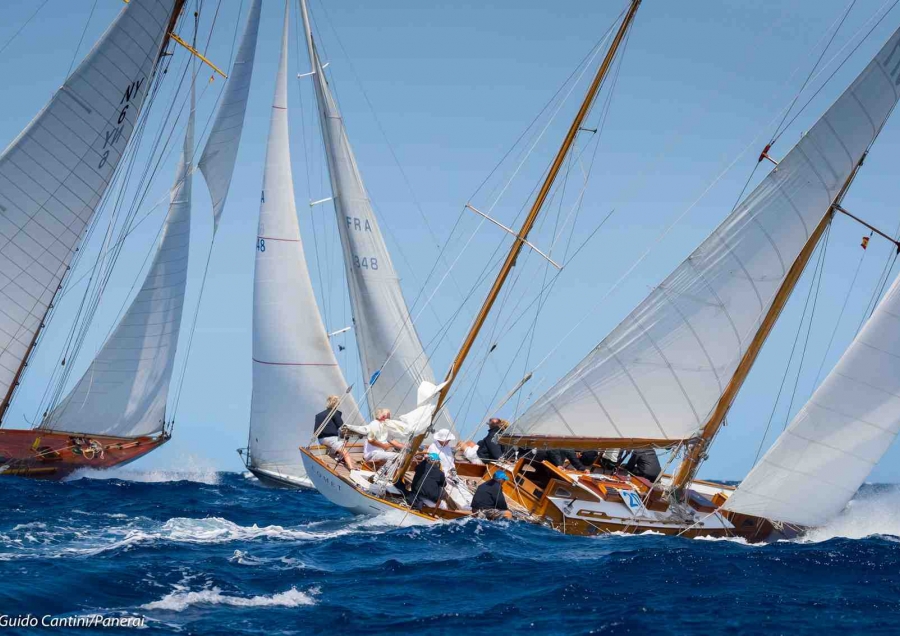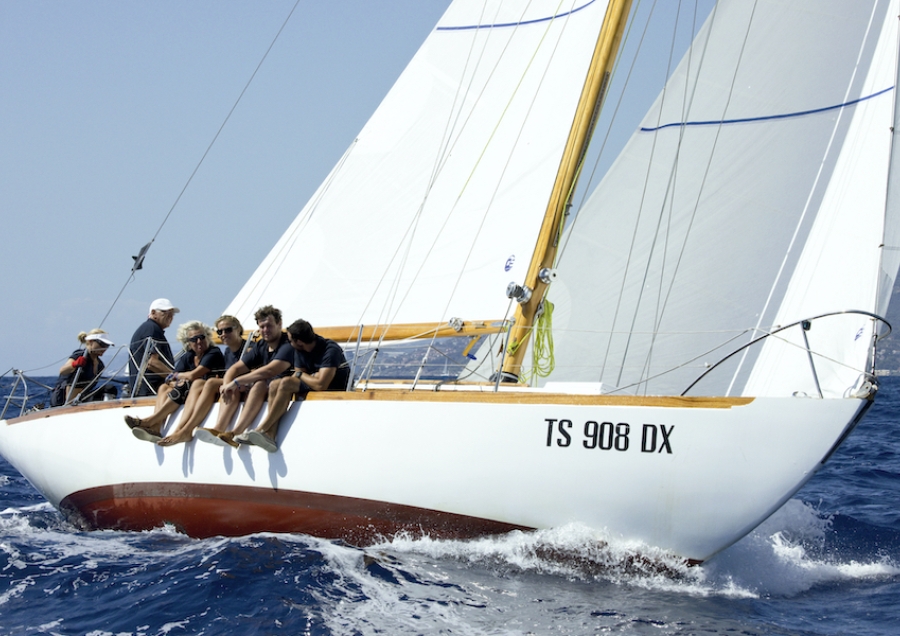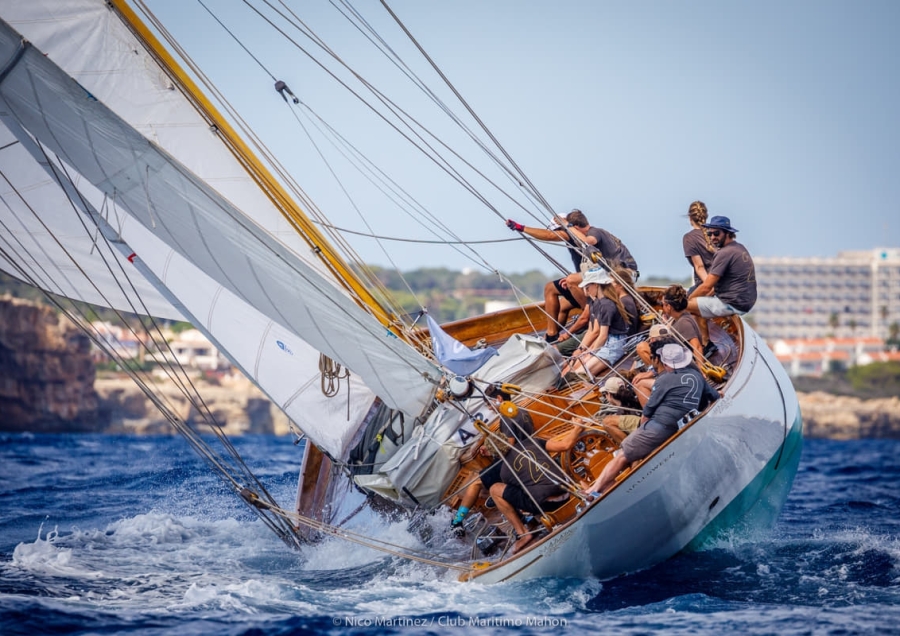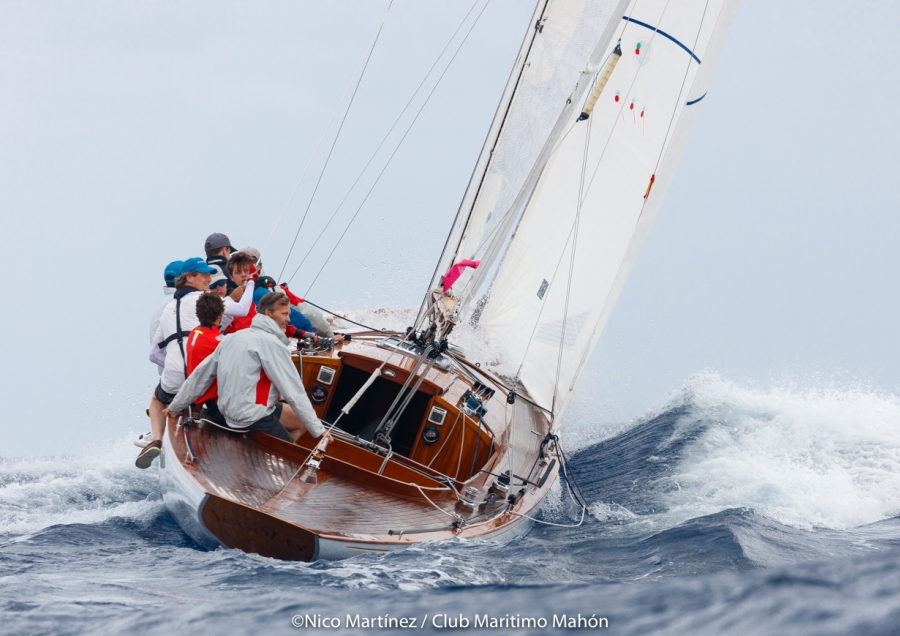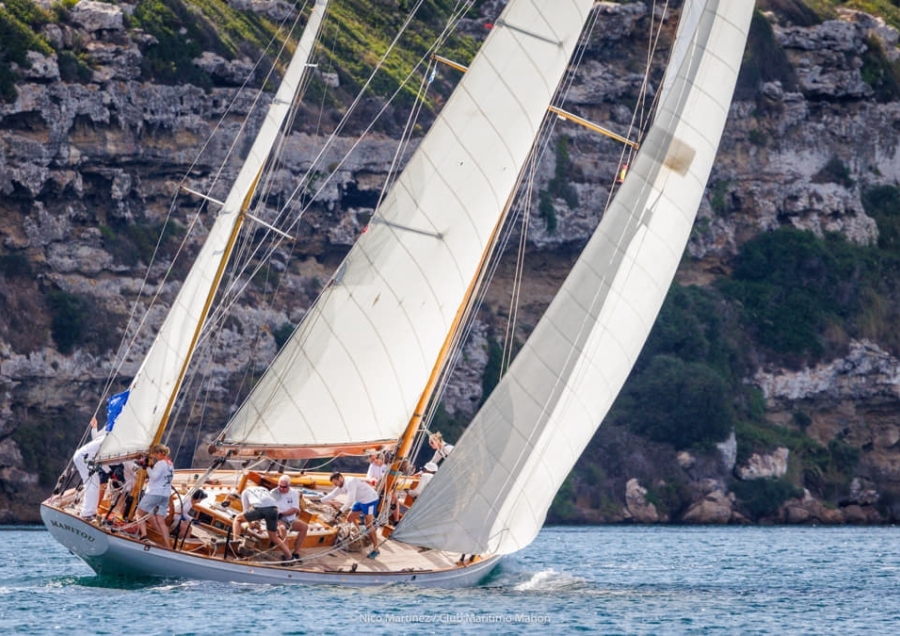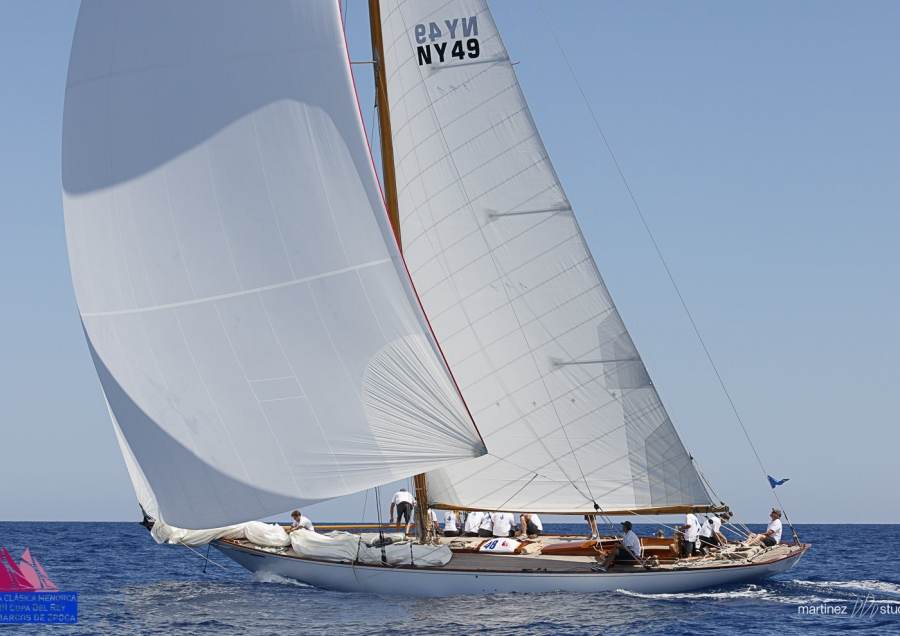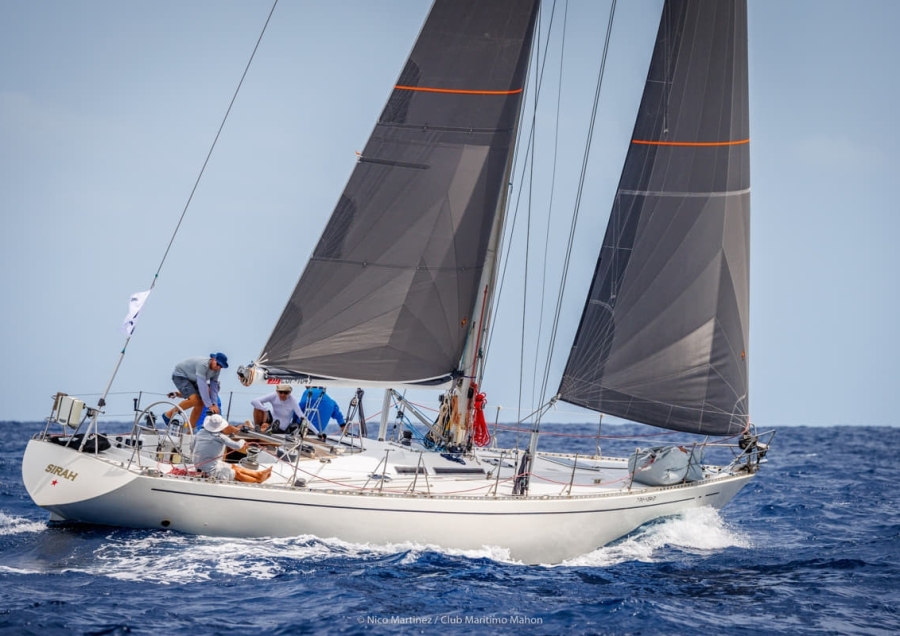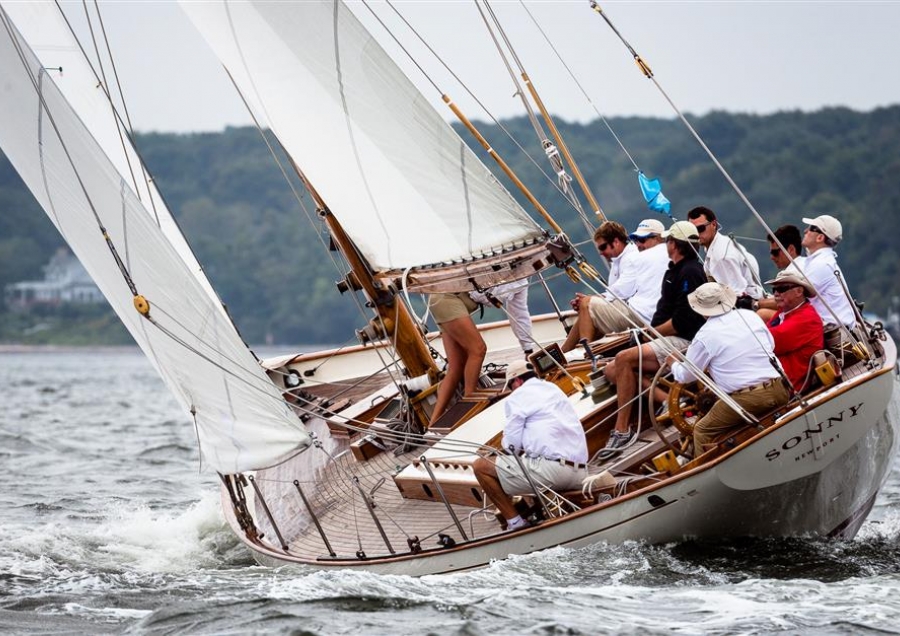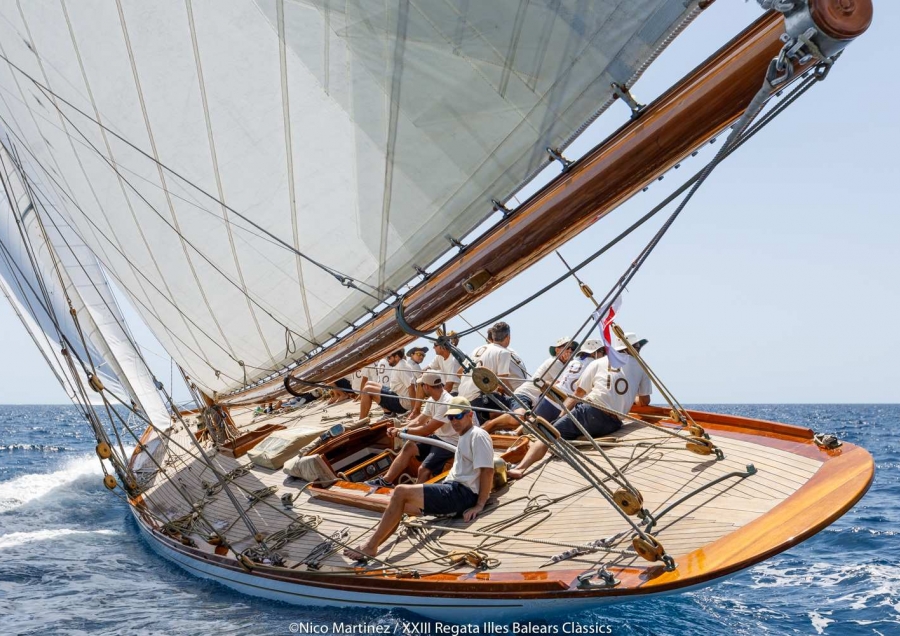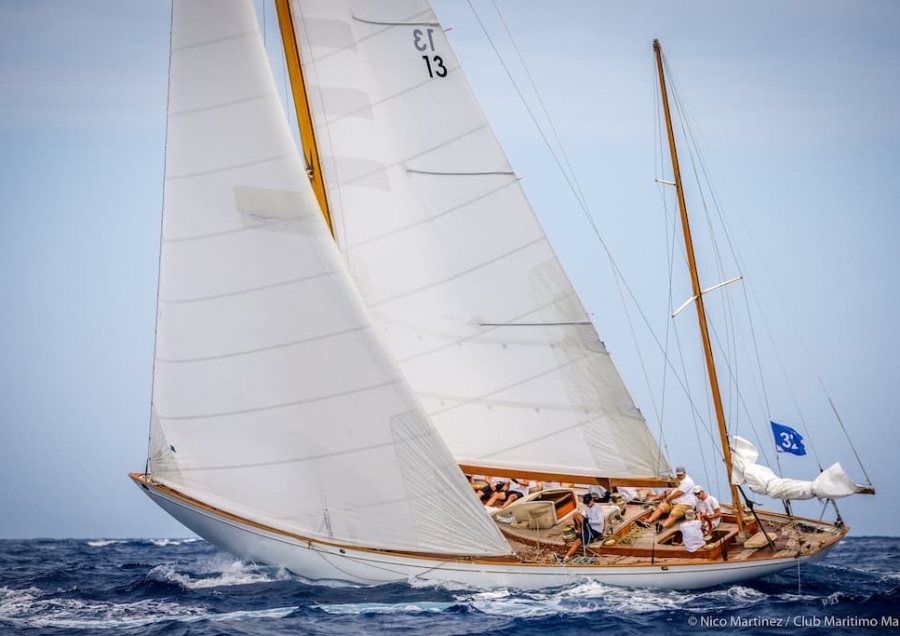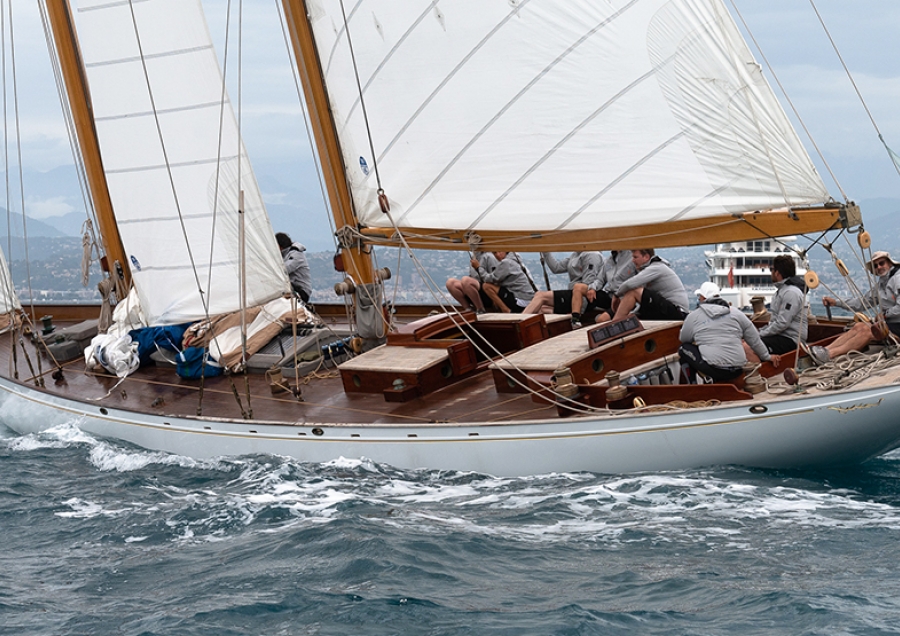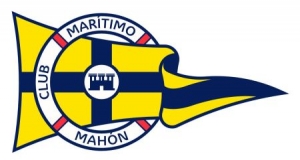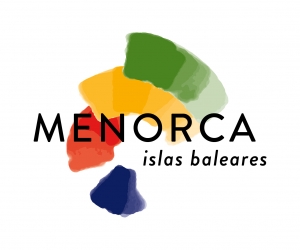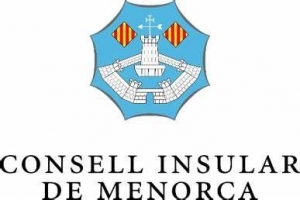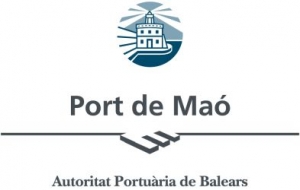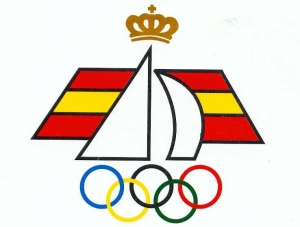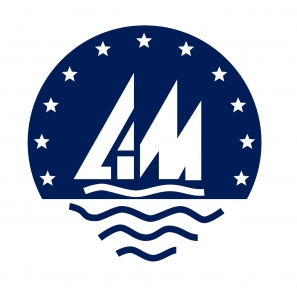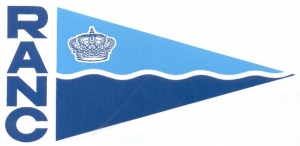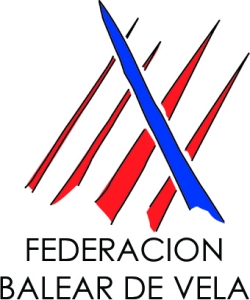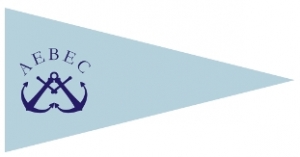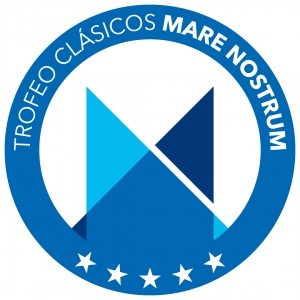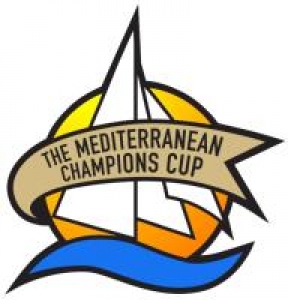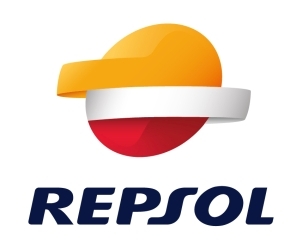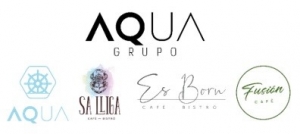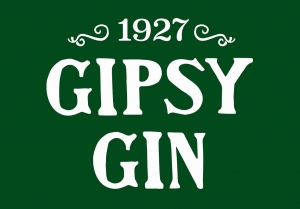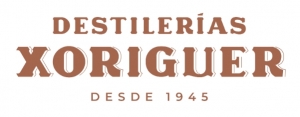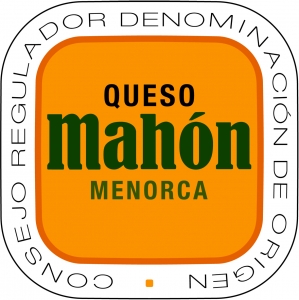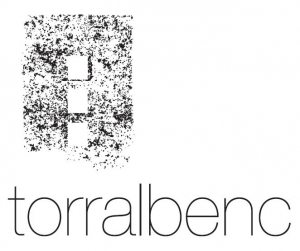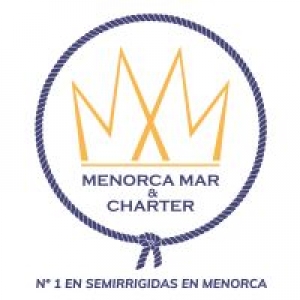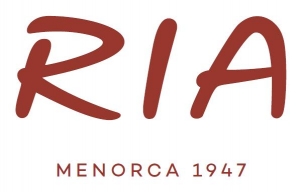 ALGOL V
ALGOL VNautor SWAN 57 007
IOR - A10 - USA 67212
Palmarès MACOBI VI
Harold & Bill Aisley
1979 10th Class A TRANSPAC - Trans Pacific race - Los Angeles - Honolulu
Transpacific Yacht Club
(with Olympic Swimmer Champion Mark Spitz)
Palmarès FLYER
Richard Long
1988 1st Class A Santa Barbara - King Harbor
Perpetual Trophy Winner King Harbor Yacht Club
1988 1st Class A - 1st Overall Flight of the Swan Regatta (3 race series)
Perpetual Trophy Winner Balboa Yacht Club
1988 2nd Class A Los Angeles - Guadalupe Island - Cabo San Lucas (1100 NM Ocean Race)
Los Angeles Yacht Club
1989 1st Class A - 1st Overall Whitney - Los Angeles Times (5 race series)
Perpetual Trophy Winner Los Angeles Yacht Club
Perpetual Trophy Winner Los Angeles Times (the oldest Yachting price in California, donated by the late Harrisson Gray Otis in 1905 "To the galant Yachtmen of the Pacific coast")
1989 2nd INTS Class Newport beach - Ensenada Mexico
Secretary of State USA Trophy Newport Ocean Sailing Association
1989 2nd Class A San Diego Yachting Cup (4 race series)
San Diego Yacht Club
1989 2nd Swan Class Audi - North Sails Regatta (4 race series)
Long Beach Yacht Club California
1989 2nd Class A Rolex Swan California Regatta (5 race series)
1st Class A - 1st Overall Rolex Oyster Perpetual Race
1st Class A Nautor Swan Race
1989 1st finish- - 1st Class A - 1st Overall Dana Point- San Clemente Island - San Diego (135 NM)
Perpetual Trophy Winner San Diego Yacht Club
1989 1st in Class Long Beach - Cabo San Lucas Mexico (850 NM Ocean Race)
Governor of California Trophy Long Beach Yacht Club
President of the United States Trophy
 ALITÁN III
ALITÁN IIIALITÁN 3 es un quarter tonner diseñado por RON HOLLAND y gemelo del mítico MANZANITA ganador del CAMPEOTANO DEL MUNDO DE QUARTER TONNER de 1977 en Helsinki.
Este mítico diseño posteriormente fue fabricado en seríe vendiendose por todo el mundo y siendo un barco venerado y reconocido por los regatistas veteranos de todo el mundo. Este modelo marco una época en los campos de regata de todo el mundo consiguiendo un amplio palmarés.
 ARGOS
ARGOSArgos is a fast, comfortable, seaworthy craft that swept the boards in the many regattas she entered. Based in Spain, she has spent her entire life in the Mediterranean and has cruised as far as Morocco and Turkey. Argos has competed in numerous editions of the Trofeo Almirante Conde de Barcelona and has been overall winner in the Spanish Rute de la Sal race. A regular at the Copa del Rey de Barcos de Época at Mahon, in 2012, she won her category and also made it to the podium at the Barcelona and Palma de Mallorca regattas. In 2014, Argos went to Le Vele d’Epoca di Imperia for the second time. She is built from mahogany planking over a mahogany frame and has iroko interiors.
Regatas
 ARGYLL
ARGYLLArgyll is owned by well-known Welsh actor, writer and TV presenter Griffith ‘Griff’ Rhys Jones who also owns Undina, a 1956 Abeking & Rasmussen. She was design no. 628 to emerge from Sparkman & Stephens’ New York studio and in shape and proportions is reminiscent of the famous Bolero, designed the same year. Argyll underwent significant renovations in England in the noughties, involving the replacement of all her frame timbers and 80% of her mahogany planking. Her interiors, on the other hand, were also adapted to ensure that she would provide comfortable cruising in the Mediterranean. In 2010, the yawl competed in several rounds of the Panerai Classic Yachts Challenge, not least Les Voiles d’Antibes and Les Régates Royales de Cannes.
Regatas
 BARUNA OF 1938
BARUNA OF 1938History ‘Baruna’ was built to the maximum size under the CCA rule and won first overall in the 1938 Bermuda Race, setting the Race record in the process. She won this race again after the war against the new S&S design ‘Bolero‘. Described by Francis Kinney in his history of Sparkman & Stephens as ‘fast in light airs, fast in strong breezes, comfortable at sea and beautiful……. Every line was absolutely perfect……… Baruna is so beautifully proportioned both hull and rig’. Text courtesy of Classic yacht info
 CALIMA
CALIMAEl Calima cuenta con dos cumpleaños. El primero, su botadura en 1970 tras ser construido en los Astilleros Carabela con un diseño de Sparkman & Stephens. El segundo, en 1999 tras ser adquirido por Javier Pujol Usandizaga. Gracias a las mejoras conseguidas y a la pericia de sus marineros, el Calima cuenta con el honor de haber conquistado en 2001 la Fasnet Race en su clase.
Regatas
 CELESTE DI MARE
CELESTE DI MAREEl patrimonio naval en España se conserva gracias al esfuerzo de los armadores privados. Por lo general se trata de personas apasionadas que viven por y para sus barcos, y que disfrutan tanto de su cuidado como de navegarlos. Amador Magraner, patrón de altura, profesional de la mar, es uno de ellos. Un día vío como izaban en una grúa un Sparkman & Stephens de 1971 con una vía de agua. Se enamoró de él a primera vista. Hizo averiguaciones y descubrió que había sido construido en los legendarios astilleros Carabela. Lo compró y se lo llevó al jardín de su casa para curarle las heridas y devolverle todo su esplendor. Lo ha logrado.
Regatas
 CHAPLIN
CHAPLINChaplin, como escribe su diseñador Carlo Sciarelli, " es un yate con clase, diseñado para cruceros y regatas ". Construido por Sangermani en 1974, es un casco que siempre ha destacado por su elegancia; muy largo en la línea de flotación, fino y equilibrado, es muy fácil de manejar debido a su desplazamiento limitado. En la regata siempre ha conseguido posiciones halagadoras. En la "Giraglia" fue decimosexto en 1975, cuarto en 1976 y 1977. En 1989 ganó el Trofeo "Dipartimento. Alto Tirreno" en el grupo B 1 Clase, reservado a los Barcos de Época. Los interiores de Chaplin demuestran cierto cuidado y gusto amateur; todos los revestimientos son de teca, al igual que la cubierta (25 mm), siguiendo el inspirador concepto de que la vida del barco debe ser más importante que las regatas temporales. Chaplin representa una de las creaciones más bellas de Sangermani en los años setenta.
 CHINOOK
CHINOOKChinook (sail number NY-48), ex Pauline, is a NY 40, one of the so-called ‘Fighting Forties’. A total of 14 examples of this class were commissioned between 1916 and 1926 by members of the New York Yacht Club. Just four are still afloat, including Rowdy (1916) and Marilee (1926). The latter and Chinook are the only gaff cutter-rigged versions. Chinook was built simultaneous to 11 other identical NY40s in just six months between 1915 and 1916.
Purchased in March 2010 in Newport by Irish skipper Jonathan Greenwood and Sandra Ugolini, Chinook was cargo- shipped to Genoa and then Bizerta in Tunisia. Her next owner, Graham Walker, who had already won the Trofeo Panerai on several occasions with Rowdy, sold her on to London-based Paolo Zannoni, who sailed her to victory in the Vintage category of the 2014 Trofeo Panerai.
Regatas
 CLARIONET
CLARIONETClarionet is one of the original Sparkman & Stephens ‘terrible twins’ which set the trend for performance fin keel yachts, Nic Compton steps onboard At just 36ft 9in, the Sparkman & Stephens sloop Clarionet is an unassuming yacht, often dwarfed by larger competitors on the UK classic racing circuit. Yet Clarionet helped change the course of yacht design and influenced the shape of most boats since the 1960s. It is no wonder, then, that her current owner has taken the trouble (and expense) to return her to original configuration – even though the work has almost certainly ‘de-optimised’ her for racing. Her race winning days may well be over, but something more important has been achieved in the process. Clarionet was built during a major turning point for yacht design. Designers had been experimenting with fin keels since the 1890s, but the concept only really took off after the resounding success of Bill Lapworth’s Cal40 design in 1963. Sparkman & Stephens soon came in on the act, designing their first ‘centreboard and skeg’ design, the 40ft Deb (now Sunstone), in 1964. But it was the success of a pair of boats designed for the RORC’s One Ton rule that convinced Olin Stephens to fully embrace the concept. Clarionet (S&S design No 1856) and Roundabout (No 1857) were designed for former Admiral’s Cup buddies Derek Boyer and Sir Max Aitken. Both yachts had fin keels, skeg rudders, and counter sterns with small reverse transoms. Both were traditionally built at the Clare Lallow boatyard in Cowes, of mahogany planking over larch frames. They were lightly fitted out, mostly in 6mm ply to keep weight down. Or, as Olin Stephens delicately put it: “Layouts below are similar, being simple and clearly directed towards offshore racing.” Hard to handle The two boats took the British yacht racing scene by storm in their first year, with Clarionet winning Cowes Week and the RORC St Malo Race in 1966, and Roundabout winning the Round the Island Race two years running in 1966/67. Despite their success, however, they were not without their faults and proved at times hard to control, as Stephens later admitted: “Despite sharing a conspicuous fault, Clarionet and her near sister Roundabout soon showed their ability as two of our more successful yachts. They became known as the ‘terrible twins’ both for the speed they showed and their frequent broaches on hard runs. Thus in a single shot they demonstrated the value – and the danger – of something new: the pioneering use of the separated rudder and keel.” Despite these reservations, the performance of the two boats encouraged Olin to use a similar keel on one of Sparkman & Stephens’s most successful designs ever, the 12-Metre Intrepid. It was the end of the long keel configuration in the America’s Cup and, by extension, yacht racing in general. Sailing yacht design would never be the same again – thanks in part to the outstanding performance of those ‘terrible twins’. Clarionet’s career wasn’t all plain sailing. After her triumphant first year race results were decidedly mixed, including finishing 13th out of 21 boats in the 1967 One Ton Cup at Le Havre. Perhaps that’s why, just 18 months after she was built, Boyer took the drastic decision of asking Lallows to raise the deck. At that time, the RORC racing rule included a mast height factor which was measured from the deck to the top of the mast, and Boyer hoped to gain an advantage by reducing that measurement. Lallows duly increased the camber of the deck beams, so the foredeck was raised by about 4in in the middle, creating a turtle-back effect. As a result the cabin sides were reduced to an ugly wedge just 2in high at the forward end, and both forward portholes had to be removed and blocked in. It was a brutal alteration which proved pointless as within 12 months the rule was changed anyway. Boyer sold the boat in 1971, and she then went through a succession of owners. One of these was JJ Rainworth, who entered her in the first AZAB (Azores and Back) race in 1975, finishing a respectable 9th place out of 52 boats – two places ahead of Robertson’s Golly skippered by Claire Francis. Two years later she was bought by George Playfair, whose son, Nick, entered her in the notorious 1979 Fastnet Race. Clarionet had by then been fitted with wheel steering, which jammed shortly after the beginning of the race. Undaunted, her crew fitted the emergency tiller and battled on to within 55 miles of the Fastnet Rock before retiring – along with most of the other boats in their class. In the mid-1980s, the yacht was bought by John Breakell who based her on the River Orwell in Suffolk. He undertook an extensive refit, including replacing the raised deck and upgrading the boat’s sail wardrobe, adding a new Mylar genoa, a Dacron mainsail and a couple of tri-radial sails. La mayor flexibilidad y práctica con casos reales Under Breakell’s tenure, Clarionet returned to winning form, becoming overall champion of the EAORA (East Anglian Offshore Racing Association) for three years, as well as class winner of the 1987 Fastnet Race. Her winning ways continued under her next owner, Paul March, who based the boat in Brighton, competing in several Fastnets and at least one Round Britain and Ireland Race. Clarionet was RORC points champion five times, even winning her class in the 2001 Fastnet, by which time she was 35 years old. By 2013, Clarionet had acquired the status of a classic and, under new owners, joined the circuit on the Solent, winning 1st at the 2013 Panerai British Classic Week and 2nd in 2014 and 2015. The hard choice By the time Andrew Harvey spotted Clarionet, she had all the trappings of a modern racing yacht, including aluminium mast, self-tailing winches, laminated sails, ball bearing blocks, rigid boom vang and a retractable bowsprit for an asymmetric spinnaker. It was the natural development of a yacht that had been raced hard for decades under multiple rating rules and was intended to win rather than look pretty. But Harvey had other ideas. “I originally thought we’d just replace the aluminium mast with a wooden one,” he says. “But then I looked at the original plans and saw how stunning she was originally. So we had this discussion about how, if we just want her to be competitive, there’s a lot of stuff we don’t need to do. But my view was to make her as original as possible. She would be less competitive and she would be more difficult to handle, because of the winches, the blocks, the sails – everything would be more difficult. But who cares?” Clarionet was entrusted to the capable hands of Paul Spooner and Mike Barnes, who have vast experience of restoring yachts designed by William Fife, GL Watson and suchlike but hadn’t tackled a project built as recently as the 1960s. The pair researched the boat’s history and, using archive photos and the original drawings – miraculously still filed in a cabinet at the Lallow boatyard – pieced together what she would have looked like when she was launched in 1966. Turning their research into physical reality was the job of Paul Kendall and Tim Frearson at Traditional Shipwright Services in Poole. The biggest job was lowering the deck, which involved fitting new deck beams with less camber for the front three quarters of the boat, as well as replacing the cabin sides. But it’s the level of detail achieved by the restoration team that is truly impressive. For example, the plastic tops on the stainless steel stanchions were no longer available, so they were carefully recreated in CAD and made on a 3D printer. The self-tailing tops were removed from the winches and replaced with plain tops machined from solid bronze. There were a few surprises along the way, not least the four halyard winches located on the coachroof with their unusual, one-armed wooden cleats. Even though they appear less efficient than the multi-clutch system that had replaced them, they were lovingly replicated according to the original drawings. Likewise the experimental ‘plank’ boom, which was accurately recreated by Collars, along with the new wooden mast. As for sails, all the fancy modern sails accrued over the years were replaced by a narrow-panelled mainsail and mitre-cut foresails in ‘Classic Cream’ from Bainbridge Sails. Retro look Below decks, the original plywood interior had survived remarkably well and just need a lick of paint, although the search of authenticity saw the modern heads chucked out and replaced with a refurbished Blake. The hull also needed little work, despite all the years of racing, but the veneer applied to her transom a few years before was removed and painted over, as per original. It’s an extraordinary amount of work to make a boat less efficient than she was, but having acquired the status of a classic yacht, authenticity was always going to be the holy grail. It’s a process that might give her an advantage under the CIM handicap rule used on Mediterranean classic yacht races but doesn’t find much favour under the IRC system used by the British Classic Yacht Club. Indeed, Clarionet finished 6th in class at British Classic Week last year. She did however win another accolade: the trophy for Best Presented New Entrant – the closest thing the regatta has to rewarding authenticity. Sometimes history is more important than victory.
 COMET
COMETComet’s design was inspired by Stormy Weather and Skylark both of which also emerged from the Sparkman & Stephens studio in New York. Her first owner was a Chicago-based lawyer called John P. Wilson who sailed her on the Great Lakes. In the 1970s, however, the yawl completed a four-year round the world voyage. In 2002, Comet’s new owner Peter Wood had her shipped from the US to Britain. There, she was restored at the Gweek Boatyard in Cornwall in line with her original plans and renamed Cometa. Transferred to the Mediterranean, she won the Porquerolles Classic in 2007, before being sold to a Swiss owner in 2012 who returned her to her original name of Comet.
Shipped from USA to Gweek Quay Boatyard in Cornwall for restoration in 2004. She had new masts fitted and was renamed ‘Cometa‘. ‘Classic Boat’ magazine showed her refit in November 2004 with Olin Stephens having come aboard himself for the launch! 2007 – New ownership 2012 – New ownership and reverted back to the original name ‘Comet’ Based in Barcelona at the Real Club Nautico and will be participating in the classic regattas in the Med in the coming years .(Nov, 2012)
Participated in the 2013 Yawlba event on Elba island with 4 other S & S yawls.
Regatas:
 CRIVIZZA
CRIVIZZACrivizza | History Sailors since their youth, after a life spent in the Swiss mountains, at CERN, returning to the sea, to experience the sea, was an almost necessary choice. So they approached Crivizza, both Ariella and Gigi, almost without knowing it. Back in Italy, in Versilia, on the docks of Viareggio, they realize that a classic boat is their most natural choice. Reviewing the Kerkyra II, iconic One Tonner designed by Sparkman & Stephens for Marina Spaccarelli Bulgari (third at the ’69 One Ton Cup with Straulino at the helm) convinces them more and more of this idea. These are the boats of their youth, boats laden with a flavor that is now disappearing. This is where another big name in sailing comes in, his friend Mauro Pelaschier, who points him right to Crivizza, two years ashore but a big project. He himself, in 2018, had gone there in stages, promoting the Charta Smeralda as an ambassador for the One Ocean Foundation . It is love at first sight, and Crivizza becomes theirs. Bought and put in the water, strengthened by a new sail trim masterfully crafted by Olimpic Sails of Trieste, Crivizza immediately reveals its spirit. The boat performs and is super competitive, heaves like few and remains intuitive, balanced on the rudder. A world opens up and Ariella and Gigi embark on this adventure, surrounded by friends and fans ready to participate. In just one year, Crivizza becomes the center of gravity for more than 20 people who, in turn, always turn out to be ready to come aboard as crew. A crew of friends, but competitive as few and with amazing results. The focus is always them, Ariella and Gigi, unfailingly accompanied by Umberto Wetzel and Antonia Contin. But big names in sailing, Mauro Pelaschier, Roberto Perrone Capano and Roberto Sponza, to name a few, also come aboard. Refit In a first and satisfying season, as is natural, Crivizza reveals the pains of age. Fall 2022 is then the turn of the refit. At the Francesco del Carlo Shipyard in Viareggio, she is thus immersed in the world of Versilia’s craftsmen, a world, moreover, among the best that can be found-as the owners point out. The deck and foredeck are redone, as well as the mast foot is also reinforced. Masterful work from which emerges a perfect boat, faithful to the original and even more competitive. The 2023 season confirms this, although still far from over. Indeed, it is now Imperia’s turn, then France, with Antibes, Cannes and Saint Tropez.
 EL ORO
EL ORO‘El Oro’ was long languishing in a yard in Spain when purchased in 2007 by Dr. Timothy Wilson and sailed to his yard in Yangon, Myanmar ( Ringle Marine Services ), where she underwent a complete restoration, with a further refit in 2014.
Built to a Georges Auzepy-Brenneur design, she is 5 layers of diagonally cold-moulded mahogany on laminated mahogany beams and frames and launched 24 May 1975.
Since her restoration she has cruised and raced in Asia, The Baltic, Caribbean, and the east coast of the USA
Regattas:
2011 Raja Muda, Malaysia. Class Winner
2016 Guadeloupe to Antigua. Winner Overall
2016 Bermuda Race. 2 nd Class. 18 th Overall
2017 RORC Caribbean 600. Winner Classic Division
2017 Antigua to Bermuda. Winner Classic Division. 4 th IRC
 ESPERANZA CC (CHINA CLIPPER)
ESPERANZA CC (CHINA CLIPPER) GERMANIA V
GERMANIA VEl primero de este nombre; 'Germania I', encargado por la dinastía siderúrgica Krupp y diseñado por Max Oertz, fue construido en Friedrich Krupp Germaniawerft. Esta goleta de 47 metros compitió con éxito en el Solent contra el Britannia de Eduardo Príncipe de Gales y el 'Meteor' del Kaiser Wilhelm. En 1955, el apasionado y experimentado marinero Alfred Krupp encargó a Abeking & Rassmussen la construcción del 'Germania V' en acero como un 13 KR Yawl, un rápido yate de regatas oceánico con gran comodidad también para crucero. Su carrera deportiva comenzó en 1956 con la “Semana de Kiel”, la Ronda de Skagen y numerosas regatas en los mares Báltico y del Norte. En 1960 participó en la carrera Nueva York - Bermudas, seguida de la Transatlántica Bermudas - Skagen Race, terminando tercera después de Ondine y Barlovento y por delante de Escapade y Drumbeat. Al año siguiente se incorporó a la carrera Buenos Aires – Río de Janeiro. En 1963, Krupp encargó el primer yate de carreras construido en aluminio, también en Abeking & Rasmussen, y donó el Germania V a la DHH (Asociación Alemana de Navegación en Alta Mar). Como yate de entrenamiento participó con cierto éxito en numerosas regatas. Su siguiente propietario, el Sr. Talbot, lo navegó como yate privado durante seis años en aguas del Mediterráneo, el Caribe y los Estados Unidos, lo que también le hizo una importante renovación antes de encargarle una goleta de 100 ′. Desde 1991, el actual propietario navega con el Germania V como yate privado por el Báltico, el Mar del Norte, el Caribe y el Mediterráneo. Desde entonces, ha sido reacondicionada y actualizada periódicamente”.
 GIPSY
GIPSYGipsy fue el único barco de uso civil que se construyó en el astillero Echevarrieta y Larrinaga de Cádiz para un uso eminentemente militar. Entre los años 2002 y 2006, fue restaurado fiel a sus orígenes.
Regatas
 HALLOWE’EN
HALLOWE’EN The 24.7m cutter Hallowe’en designed by William Fife III for Lt Col JFN Baxendale, was launched in 1926 just in time to compete in the ORC FastNet. William Fife III, designer of a number of classic yachts still racing today was quoted once as saying “Hallowe’en is the perfect gentleman’s yacht. She is a jewel”.
Racing in the 2nd Fastnet Race, Hallowe’en sailed the fleet home to cross the line some 10 hours before the next competitor. A record which would stand until 1939 when the new course was shortened.
Hallowe’en is a Marconi cutter inspired by the lines of the International 15-metre Classes. She not only won the Fastnet but also set an as yet unbroken record for the race in the year she was launched. Hallowe’en later spent time in the Mediterranean and the Atlantic, and, under the name Magda XII, in Norway.
There Prince Olaf, the future King of Norway, was often a guest aboard. Between the 1940s and 50s, she sailed in America as Cotton Blossom IV, winning numerous regattas. During the 1980s, she was restored by the Classic Boat Museum in Newport, to which she’d been donated.
In the course of her long career Hallowe’en has been converted from a Marconi cutter to a gaff cutter and then a yawl. In 1993, she was converted back to a Marconi cutter during a restoration job at Barcelona. In 1999 she was sold to a Dutch owner. She has been owned by an Irishman since 2007. Fife himself described Hallowe’en as “perfect, a gem”.
William Fife decided to rig the yacht as a low-aspect ration Bermudan cutter, which was uncommon in the days when gaff rigged racers dominated the various regattas. These experiments with her rig continued over the following years as her mast and boom heights changed and eventually she was transformed to a yawl. As a yawl– rigged COTTON BLOSSOM IV she dominated ocean racing for many years, and has held important records. After racing in the Mediterranean for a number of years she returned to the Atlantic under new owner Alfred Larsen, a Norwegian industrialist. She became the Royal Norwegian Racing Clubs official yacht and was helmed numerous times by future king to Norway, Prince Olaf.
In 1938 she ventured across the Atlantic and then disappeared off the radar. She was later discovered by Walter Wheeler and renamed Cotton Blosson IV before continuing her history of ocean racing and eventually being donated to the Classic Boat Museum at New Port, Rhode Island where she waited for a much needed refit. After 5 years of work in New Port, funds dried up and Hallowe’en was in need of new ownership and she eventually returned to the Mediterranean when Elizabeth Meyer (owner of J-Class Endeavour) helped find a buyer.
Under her new syndicate of Irish custodians, Hallowe'en has continued to improve the racing standards set in her early years by winning numerous Mediterranean regattas, as well as winning overall the Panerai Classic Yacht Challenge in 2017.
Regatas
 HAPPY FOREVER
HAPPY FOREVER Regatas:
VELA CLASICA MENORCA 2019 (2º Clasificado clase ESPIRITU DE TRADICIÓN)
VELA CLASICA MENORCA 2023 (2º Clasificado clase ESPIRITU DE TRADICIÓN)
 HIGH SOCIETY
HIGH SOCIETY LEGOLAS
LEGOLASRegatas
 LIPTON
LIPTONHISTORIAL
Lipton was built in 2011 in La Rochelle, France. She takes the name of Sir Thomas Lipton, a British merchant and yachtsman, creator of the famous Lipton brand of tea, and one of the most persistent competitors of the America's Cup history.
Designed by naval architects Joubert and Nivelt, this Tofinou 12 mixes craftsmanship and modernity in respect with the shipyard tradition, Tofinou 12 is a simple and elegant classic sailboat.
With the same line and esthetics of her sisterships, assuming her 12 meters, the Tofinou12 surprises by the speed and strength sensations she provides during sea trips to her owners. Fast and safe, she combines the beauty of teak and varnished mahogany with the modernity of stainless steel and carbon. Easy to handle, this yacht is designed for solo sailing as well as for experienced crew
 LIVIA
LIVIAToda la información de la restauración de "LIVIA" la podrá enccontar en este enlace de la FUNDACIÓN VELA CLÁSICA DE ESPAÑA:
 MANITOU - 1937
MANITOU - 1937James Lowe of Grand Rapids, Michigan, and member of both the Chicago and New York Yacht Clubs, commissioned the young naval architect, Olin Stephens, to design him a yacht that could win the Chicago-Mackinac Race. Named after the Manitou passage on Lake Michigan – and meaning “Spirit of the water”, she was launched in 1937 and in short order fulfilled her owner’s desire; breaking the elapsed time record and 1st across the line in 1938 – and winning handsomely on corrected time. She was second across the line in 1939 but first again in 1940 and 41. She also won the Port Huron-Mackinac Race in 1940 setting a new record for that race, taking almost two hours off the course record and beating her nearest rival by more than five hours. When Mr. Lowe was commissioned into the U.S. Navy in the summer of 1942, MANITOU moved on. In 1956 she was donated to the U.S. Coast Guard Academy where she was used to teach the cadets sailing, seamanship and how to work together as a crew. At the time of John F. Kennedy’s election, the Presidential yacht was a 92 ft power boat. Although he changed her name to “HONEY FITZ” in honour of his grandfather; JFK was really a sailor at heart and sent naval aide John Tazwell in search of a suitable sailboat for presidential use. With her good looks and pedigree, MANITOU was quickly selected and brought to Chesapeake Bay. Among other things she had to be fitted with all the communication equipment to ensure the President would never be out of touch with his office – or even indeed the Kremlin while on board. Jack Kennedy was to use her often there and in New England. He never raced her formally, but once off Newport during the summer of 1962 he tried to engage his friend Emil “Bus” Mosbacher’s 12 Metre WEATHERLY in a friendly sparring match. Unfortunately the Secret Service following in a patrol boat intercepted the future successful America’s Cup defender before she got close enough, much to the chagrin of the President. In 1968 MANITOU was auctioned to the Harry Lundeburg School of Seamanship, run by the Seafarer’s International Union under its then strong leader, Paul Hall. Aristotle Onassis, about to marry Jackie Kennedy in October 1968, sought to buy the yacht – apparently at any price. Long a defender of the common man however Mr Hall refused all offers, preferring to keep MANITOU for teaching less privileged young people about boats. In 1999, MANITOU was purchased by Laura Kilbourne, grand daughter of her original owner James Lowe, bringing her back into the family. Taken to Chesapeake Marine Railway in Deltaville, Virginia – not far from where she was built, the boat started a major refit, great pains taken with the intention of keeping her as original with butternut panelling and use of all the original hardware still with the boat. Before all was complete however family circumstances intervened and in late 2010 she was sold to four joint owners and the refitting; expected to prolong her sailing career for many years to come was completed in early 2011. She was then shipped to the Mediterranean.
Regatas
 MARGUERITE
MARGUERITE  MARIETTE OF 1915
MARIETTE OF 1915Mariette is a gaff-rigged schooner and was built in 1915 by N.G Herreshoff from Bristol, Rhode Island, USA. She is one of only two large yachts that Herreshoff designed and built that still exist. Mariette is a well-known competitor on the regatta circuit and has been cruising and racing in the Mediterranean since the 1970’s when she left the Caribbean to make her home in Europe. Stats LOA - 40m, Beam - 7.2m, Draft - 4.8m, GRT - 102, Displacement - 175 tons, Flag - Isle of Man. Yacht Club – Royal Cornwall.
Regatas:
VELA CLÁSICA MENORCA 2007 (1º Clasificado clase BIG BOATS)
VELA CLÁSICA MENORCA 2013 (1º Clasificado clase BIG BOATS)
 MARISKA
MARISKAOne of only four 15-Meters remaining, the others being Tuiga, The Lady Anne and Hispania.
In 2004 she was up for sale after a complicated ownership and had been converted to a cruising ketch.
In July, 2007 a complete refit was started at the yard ‘Charpentiers Reunis Mediterran e’, La Ciotat, France to bring her back to her original rig.
Toda la información de MARISKA en este enlace:
http://www.mariska1908.com/en/history.html
Regatas
 OJALA´ II
OJALA´ IIOjala' II was born in Holland in 1973 at the famous Royal Huisman Shipyard. She was built in aluminium and the primary objective was to win the One ton cup held that year in Sardinia. She represents one of the last pure IOR classic designs before the big Peterson revolution. Amongst her wins, she counts the 1975 Giraglia and 1976 Middle sea race.
 ORIANDA
ORIANDAOrianda was built in 1937 at the Carl Andersen shipyard in Faaborg, Denmark. She was designed by Oskar W.Dahlstrom and is an 85 foot (26m) staysail schooner constructed with a wooden hull. Her fascinating history contributes to the aura of mystery and charm, ultimately enhancing her beauty and appeal.
Follow the link to the website for more information.
https://vintageclassicyachtclub.com/orianda-interactive/
 ROWDY
ROWDYEl Rowdy (número de vela NY 49), construido diez años antes de que su hermano, el Marilee (número de vela NY 50), es uno de los cuatro NY 40’s que aún navegan. La flota original, construida entre 1916 y 1926 por un grupo de miembros del New York Yacht Club, constaba de catorce ejemplares.
Estos yates, apodados los Cuarenta Combatientes, fueron los ganadores de la Bermuda Race de 1924 a 1928. Rowdy, cuyo primer propietario fue el senador estadounidense Holland Sackett Duell, originalmente tenía una vela cangreja. En 1998 se realizó una gran renovación.
El yate fue comprado por el inglés Graham Walker, y en 2008 navegó por primera vez en su categoría en la regata de Mahón-Imperia y en la Vele d'Epoca en Imperia. Ganó en la categoría de Época de la prestigiosa Panerai Classic Yates Challenge en 2008, 2010 y 2011.
Regatas
 SALINAS TRES
SALINAS TRES SEA FEVER
SEA FEVER SONATA
SONATASonata is design no. 648 by American John G. Alden. Her first owner was Robert R. Williams of Detroit. She remained in the US until 2000 when she was cargoed to Mahon in Spain. There renovation work was begun but was only completed under the new owner, a Barcelona-based sailor who purchased her in 2004. In 2008, Sonata took first position in her category as well as overall victory in the Almirante Conde de Barcelona Trophy. She was also second in her class at the Copa del Rey de Barcos de Epoca at Mahon. Then, in 2009, Sonata finished second in her category at the Puig Vela Classica in Barcelona.
Regatas
 SONNY
SONNYSparkman & Stephens has designed many ‘classics’. While embracing the bloodline of Dorade and Stormy Weather, Sonny has benefited enormously from loving care extended by eight owners bent on preserving her originality. We remain in communication with the son of the gentleman who commissioned her build and also the son of the gentleman who owned her from 1957 through 1992. Commissioned by Albert D. Phelps of Connecticut, design number 94 was built by Jacob’s Shipyard on City Island New York, launched and christened Sonny in the spring of 1935. Sold and re-named Gladja she was commissioned for service during World War II. She foundered after colliding with submarine off Nassau but repaired quickly and placed back in to service. She was sold to Albert E. Peirce, owner of the 172’ square foretopsail schooner Cressida who re-named her Sonny. Ownership was transferred to George T. Bowdoin of Seawanaka Corinthian Yacht Club who cruised and raced her from New York to Maine. In 1957 Van Dorn C. Smith purchased her and while maintaining a similar sailing program for the next thirty years. During that period, the Smith family was fastidious with her upkeep and devotion to maintaining the condition of original equipment, fittings and inventory. Following a short, intervening owner-ship in the late 90s, a gentleman from Germany became the owner in 2001. He shipped her to Cantiere del Navale Argentario for major refurbishing. She was re-planked below the water line, the stem was replaced, a new keel attached and the horn timber replaced, thereby correcting the ‘quick’ repair done after her foundering during WW II. Following this major work she was raced successfully in the Mediterranean for the next few years winning in Argentario, Antibes, Cannes and St. Tropez. Sonny was returned home to US waters in 2007 by her current owner and sailed for one season prior to continuing her detailed maintenance and improvements. East Passage Boatwrights of Bristol, RI has performed extensive work including re-fastening the topsides, replacing any remaining original frames and stiffened her extensively at the mast partners. Her worm gear steering was replaced with a quadrant and wire cable and the bottle screw/lever back adjustment replaced with a purchase system. Any original equipment and fittings removed from Sonny are marked clearly and placed in safe storage. The sail inventory is continually updated and with only slight modifications, her original 1935 Sitka Spruce rig is still contributing to the performance of this beautiful vessel the way Olin Stephens intended. In addition to her regular maintenance over the winter of 2014/15 the 1-1/2” laid teak deck, was re-fastened and re-caulked. The topsides are in perfect condition, the varnish maintained to perfection. Sonny carries the most detailed maintenance records I have seen on a boat of this vintage; in fact they are more in line with the log books one would find accompanying a highly valued vintage airplane. Sonny had a very successful season of racing in 2014 including class wins in the Annual New York Yacht Club Regatta along with class and overall victories in the Museum of Yachting Classic Regatta. She commenced the 2016 season by finishing second in her class in the Leukemia Cup Regatta in June followed by a second place finish in her class at the New York Yacht Club Annual Regatta held in Newport, RI. From there she cruised up the New England coastline to compete in the Maine Series where she placed first overall in the Castine-Camden Race, sixth in class in the Camden-Brooklin Race (carrying a 25% performance rating penalty) and second in class in the Eggemoggin Reach Regatta (carrying a 25% performance rating penalty). She concluded the season with a second in class finish back in Newport, RI at the IYRS Museum of Yachting Classic Regatta in September.
 THE LADY ANNE
THE LADY ANNERegatas
 TUIGA
TUIGA VARUNA 1939
VARUNA 1939Encargada por Floyd Noble de Nueva York, originalmente se llamaba 'Clemencia'. Después de la Segunda Guerra Mundial en 1946, fue vendida, renombrada 'Adiós' y llevada a la Costa Oeste de los EE. UU., con base en San Francisco, donde compitió con cierto éxito, participando también en una regata Transpac de San Francisco a Hawái. Más tarde se trasladó a la costa del noroeste del Pacífico, donde fue adquirida por un propietario reciente y llevada al Mediterráneo. Información cortesía de la empresa de yates Sandeman.
Commissioned by Floyd Noble of New York she was originally named ‘Clemencia’. Post WWII in 1946 she was sold, renamed ‘Adios’ and taken to the West Coast of the USA, based in San Francisco where she raced with some success – participating also in a San Francisco to Hawaii Transpac regatta. Later she moved to the Pacific Northwest coast, where she was acquired by a recent owner and brought to the Mediterranean. Information courtesy of Sandeman Yacht Company.
Regatas
 VIVEKA
VIVEKAHistory Viveka, was designed by Frank Paine of Paine, Belknap & Skene and built by Fred Lawley in Quincy, Massachusetts, in 1929 and 1930. She was designed for J.P. Morgan who wanted a cruising boat that was fast as well. Thus, Frank Paine designed her to rate at the top of the class G and at the same time under the universal rules in the 12-meter class, one of the few schooners out there to rate in this class. During the Second World War, under the name Seaweed, she became part of the “The Hooligan’s Navy”, a government fleet of pleasure vessels used as spotter boats on both the West and East coasts. Until recently Viveka was owned by Merl Petersen, who circumnavigated with her one and half times. He then sold her to a British yachtsman in 2012, who sold her to the current owner. Together the two of them along with Rutherford’s Boat shop in Richmond, California, have restored Viveka to the elegant yacht she is today, trying to keep as much as possible to her original designs and layout.
Regatas:

